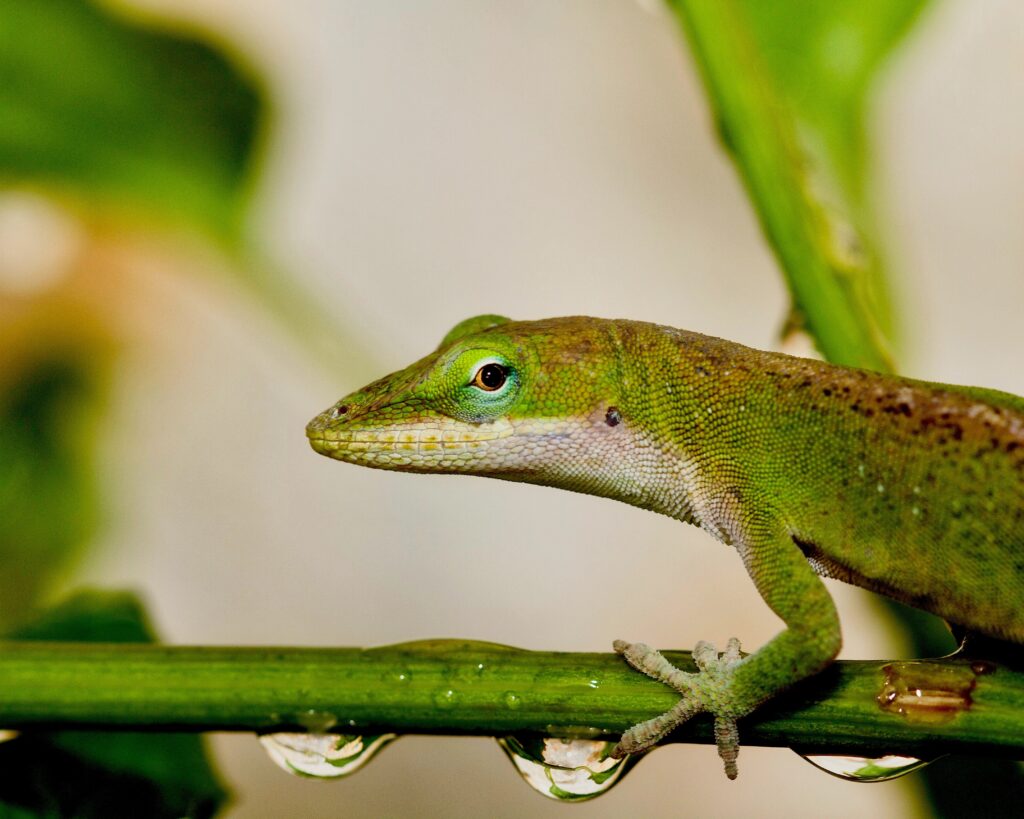
Shipping live animals, such as green anoles, requires special care and attention to ensure their well-being during transit. In this in-depth article, we will explore what green anoles are, intriguing facts about them, their popularity as pets, important regulations to consider, and best practices for packing and a general guide on how to ship green anoles.
Understanding Green Anoles
Green anoles (Anolis carolinensis) are small arboreal lizards native to the southeastern United States. They are known for their vibrant green coloration, long tails, and ability to change color to regulate body temperature or communicate.
Interesting Facts about Green Anoles
- Camouflage Masters: Green anoles can change their color to blend with their surroundings. They may appear brown or gray when stressed or during cooler temperatures.
- Acrobatic Climbers: These agile lizards are excellent climbers and spend much of their time in trees, bushes, or other elevated areas.
- Tail Autotomy: Green anoles have the ability to detach their tails as a defense mechanism, allowing them to escape from predators.
- Communication: Males often engage in visual displays, extending their dewlaps (throat fans) to attract females or establish territory.
Green Anoles as Popular Pets
Green anoles have become popular pets due to their appealing appearance, ease of care, and relatively small size. They are suitable for reptile enthusiasts of all experience levels, including beginners.
Best Practices for Packing and Shipping Green Anoles
When shipping green anoles, it is crucial to prioritize their safety and well-being. Here are some best practices to follow:
- Professional Assistance: Seek advice from a reptile expert or veterinarian before shipping green anoles to ensure proper handling and care.
- Proper Enclosure: Select a sturdy, well-ventilated container that provides enough space for the anole to move but prevents excessive movement during transit.
- Temperature Regulation: Include a heat pack or cool pack (depending on weather conditions) to maintain an appropriate temperature range for the anole’s comfort.
- Substrate and Hiding Places: Add a suitable substrate, such as damp paper towels, and include small hiding spots in the container to reduce stress during transit.
- Secure Container: Ensure the container is securely closed and labeled with clear instructions indicating that it contains a live animal.
- Shipping Timing: Coordinate with the chosen courier to minimize the transit time and avoid extreme temperatures.
Regulations to Consider
Shipping live animals, including green anoles, involves adhering to specific regulations and guidelines. Some key considerations include:
- Legal Restrictions: Research and comply with local, national, and international regulations regarding the transportation of live animals.
- Documentation: Prepare all necessary documentation, such as permits or certificates, required for the shipment of live animals.
- Courier Requirements: Confirm with the courier their specific requirements for shipping live animals, including any additional paperwork or restrictions they may have.
Couriers Offering Live Animal Shipping Services
Here are some reputable couriers that offer shipping services for live animals:
- FedEx Live Animal Shipping
- UPS Live Animal Transportation
- Delta Cargo Live Animals
Shipping green anoles or any live animals requires careful consideration of their well-being and compliance with relevant regulations. By following the best practices outlined in this guide and utilizing reputable couriers experienced in live animal transportation, you can ensure that your green anoles are safely transported to their destination. Remember to consult with experts, provide appropriate enclosure conditions, and adhere to all necessary documentation requirements. With these guidelines, you can confidently ship green anoles while prioritizing their safety and comfort.
